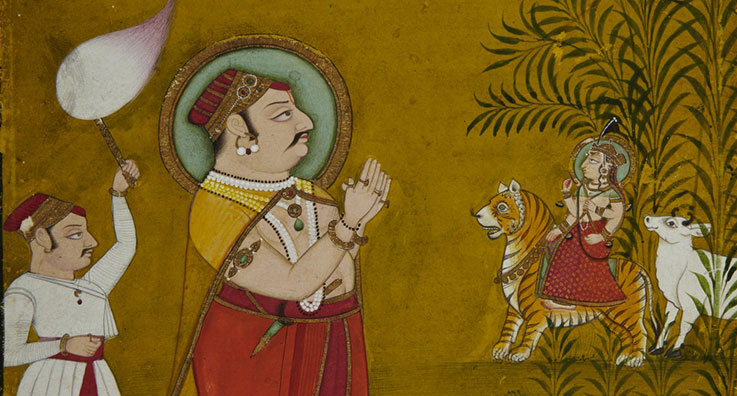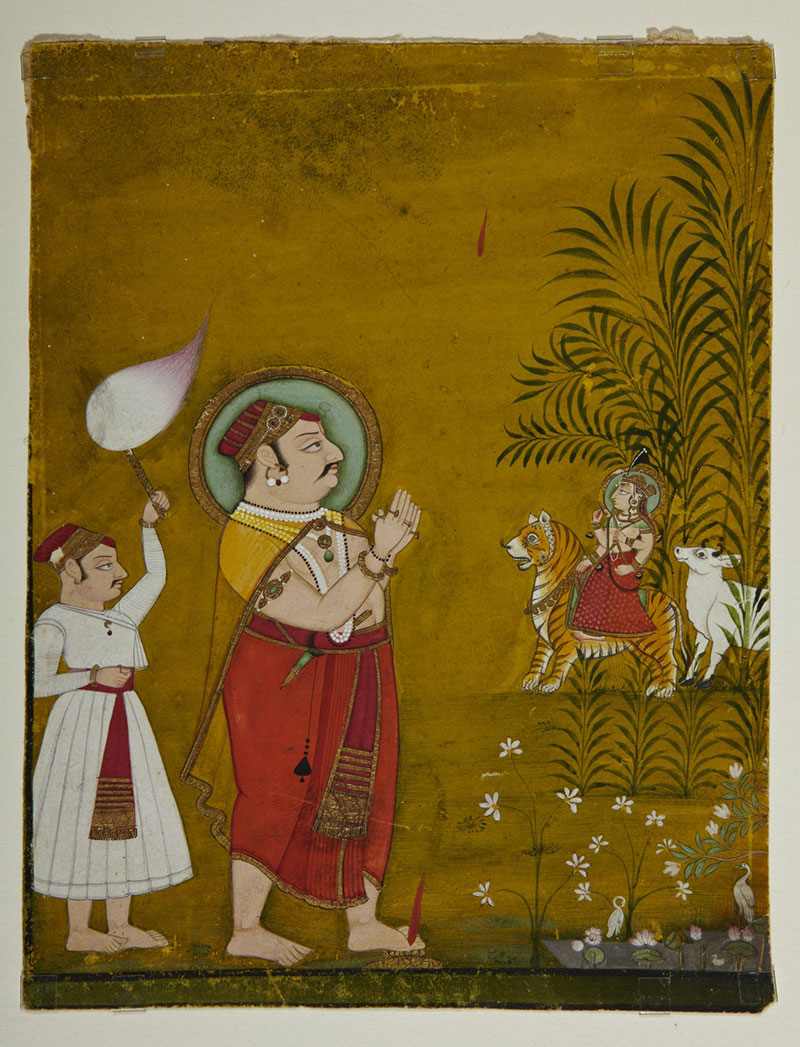World Tour: India – Ferocious Felines

Feb, 02, 2022
Art
World Tour: India – Ferocious Felines
Majestic and ferocious, the Bengal tiger has been a national symbol of India dating back to the 25th century B.C.E. when it was displayed on the Pashupati seal of the Indus Valley Civilization, located in the northeastern region of South Asia. As an apex predator at the top of the food chain, the tiger plays a pivotal role in the health and diversity of the ecosystem. The tiger has an important place in Indian culture, deemed a symbol of magnificence, power, beauty and fierceness. It became a royal symbol by 300 C.E. in the Chola Empire and is now designated the official animal of India. In modern day, it has been chosen with pride to be the emblem of the Reserve Bank of India. This ferocious feline has appeared time and time again in mosaics, murals, carvings, religion, and can be seen in Hefty Raja with Attendant on Tiger, and Two Red Blobs of Shiva’s “Spit” in Sky and on His Foot from the PhxArt Collection.

Unknown, Hefty Raja with Attendant, Durga on Tiger, and Two Red Blobs of Shiva’s “Spit” in Sky and on His Foot, 19th century. Ink and color on paper. Gift of Drs. Thomas and Martha Carter.
Categories
What can we help you find?
Need further assistance?
Please call Visitor Services at 602.257.1880 or email